Buyer’s guide Ford Fiesta Mk1
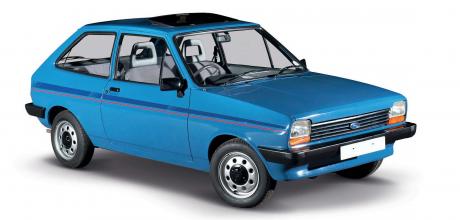
A bold step forward for Ford, the original Fiesta quickly established itself as a major success. Here’s what you need to know if you’re thinking of buying the 1970s supermini.
Words Christian Tilbury
Photos Adrian Brannan
BUYING GUIDE: Mk1 Fiesta
What to check when buying Ford’s original supermini.
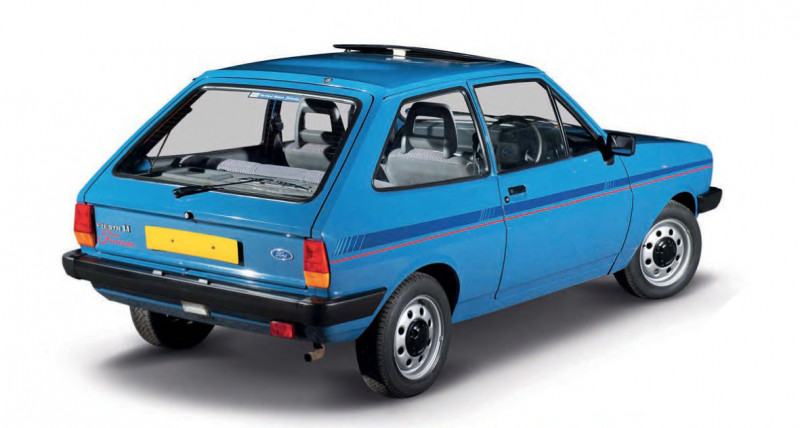
Ford might have been distinctly late to the supermini party, but it certainly made an entrance with the Fiesta. Unveiled in February 1977, it immediately stole attention from established rivals, such as the Volkswagen Polo, Renault 5, and Fiat 127, and just six months after launch it was Europe’s fastest-selling car.
It was a good job too, as Ford had a lot riding on the Fiesta’s success. Not only was the crisply-styled hatchback designed to tap into a huge, rapidly-evolving sector, but the manufacturer had also pumped an unprecedented amount of cash into what was internally known as the Bobcat project. As well as being its first supermini, the Fiesta also represented Ford UK’s first foray away from its traditional engine, drivetrain, and body preferences, bringing the manufacturer’s range bang up to date with the use of front-wheel-drive, a transverse engine and a two-box, hatchback body style. The transverse-engine layout meant the existing Kent engine was unsuitable, so Ford installed the new Valencia engine that with a three-bearing crank ensured a shorter block. Initially available in 957cc and 1117cc form, a 1297cc version followed when the desired five-bearing crankshaft had been configured.
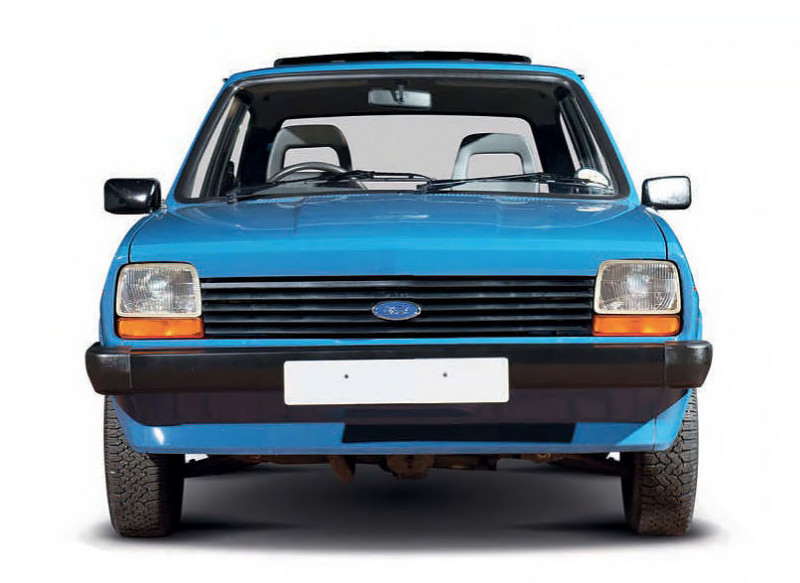
What’s more, the Fiesta’s clever packaging extended far beyond its space-saving drivetrain. Although smaller than the Escort, it offered more passenger room, while its spacious feel was emphasised with the large rear window and deep side windows. In fact, such was the generous glass area that the Fiesta boasted class-leading 86 per cent all-round visibility. It was slippery for what it was too, beating its rivals with an aerodynamic Cd factor of 0.42.
Customers got to choose from base, L, Ghia, or S models. The GL would follow in 1978, with Popular and Popular Plus models appearing in 1980, while a minor facelift in late 1981 saw new bumpers and the likes of revised suspension settings. The XR2 and Supersport also arrived in the very early 1980s, but it was always the non-sporty versions that accounted for most Fiesta sales, right up until it was superseded by the Mk2 in 1983. As Ford readies to send the Fiesta to sleep for good, interest in the Mk1 is now even greater than in recent years. It might have started as Ford’s baby, but it’s certainly matured into a fine classic Ford.
“IT IMMEDIATELY STOLE ATTENTION FROM ESTABLISHED RIVALS, AND JUST SIX MONTHS AFTER LAUNCH THE MK1 FIESTA WAS EUROPE’S FASTEST SELLING CAR”
INTERIOR
Cracked dashes are common, but the bare plastic versions of the more basic models tend to be more durable than those of the Ghia. Worn trim is a problem as seats can only be replaced with scarce second-hand items. Both vinyl or cloth seat coverings present possible issues, the former often splitting and the cloth becoming baggy and eventually tearing. The top of the rear bench on cloth-equipped versions is often perished due to sunlight streaming through the rear hatch, but it’s the driver’s seat side bolster on all versions that is usually first to show signs of wear. Uncut doorcards and parcel shelves are very hard to find, although new black doorcards are available at circa £200 a pair. Likewise, black kick panels are available new, together with new headlinings in a variety of colours. Spindly door pulls can become brittle and snap and, on higher specification models, it’s not unusual for the centre console to be hacked about to take a later, DIN-sized stereo.
ELECTRICS
Cleaning earths and corroded connections usually rectifies most electrical issues, especially with the rear lights and heater. Damaged head lights can be replaced easily enough, with both used and NOS readily available. Check the condition of the wiring as there’s a strong possibility that it’ll bear a few scars from the past additions of aftermarket stereos, alarms, and immobilisers.
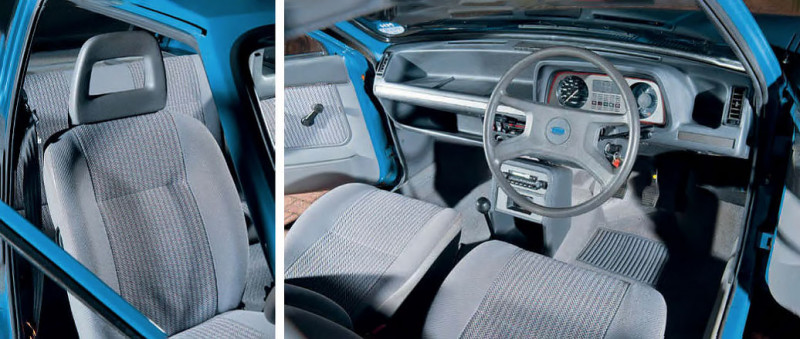
BODY
Common areas for rust include the front wings and front panel, windscreen scuttle, rear wheelarches, rear valance and lower rear quarters, edges of the doors and bonnet, and around the tricky to repair fuel filler cap. Structural corrosion is likely in the strut tops, under the battery, boot floor, outer edges of the front footwells, inner wings, bulkhead, and the sills. If a factory sunroof is fitted then the sills need even closer inspection, as this is where the often-clogged drains exit. Remanufactured panels and repair sections are increasingly available, including boot floors and front wings. Front panels are a sticking point though, with NOS changing hands for close to £500. Replacing the bumpers is no longer an issue for early cars, with the slim bumpers now offered by Magnum Panels at circa £200 per pair. Those for the later facelift, 1983-on models can also be sourced easily enough.
BRAKES
It’s easy to get new, OE-spec braking components off the shelf. Better still, they’re dirt cheap — reckon on as little as £30 to replace corroded or warped discs, just £25 for a set of new rear brake shoes and no more than £15 to swap out a seized rear brake cylinder. Sticky calliper due to a car being stood? Then circa £15 buys a rebuild kit or circa £80-£100 a new replacement. An inefficient handbrake is really the only issue to pay a bit more attention to, the complex pulley mechanism meaning it can be tricky and time-consuming to adjust.
“SUCH WAS THE GENEROUS GLASS AREA THAT THE MK1 FIESTA BOASTED CLASS LEADING VISIBILITY”
SUSPENSION
Tired springs and dampers will be obvious from a crashy, unforgiving ride and a simple bounce test. Worn rear trailing arm bushings are common, with uneven rear tyre wear and a clunking from the back end over bumpy surfaces being the common symptoms. Vague steering points to tired track control arm bushes.

GEARBOX
A tired gear linkage is the usual cause of gear selection problems, while the synchromesh can also get a bit crunchy, initially showing signs of wear between second and third gears and on the downshift. The biggest issue is if the BC ‘box has any rumbling that increases with speed. The noise can originate from the mainshaft, where the wear will also eventually cause its end to break up, or the differential. If it’s the differential bearings at fault, then an erratic or non-functioning speedometer and leaking driveshaft oil seals are common symptoms.
ENGINE
957cc and 1117cc aren’t as hardy as the 1297cc five-bearing unit — the small-bore motors needing a rebuild at as low as 50,000 miles — but it’s not unusual for the engine of any Mk1 to be tired after so long. A motor with advanced piston and bore wear will smoke, breathe heavy and drink plenty of oil. It might also have a reluctance to tick over. Timing chains go slack and rattle, but more of a concern is an intermittent clacking from the top end, which is a symptom of broken camshaft followers. Carbs are generally reliable, so any rough running is usually down to ignition problems. In particular, the points tend to close up.
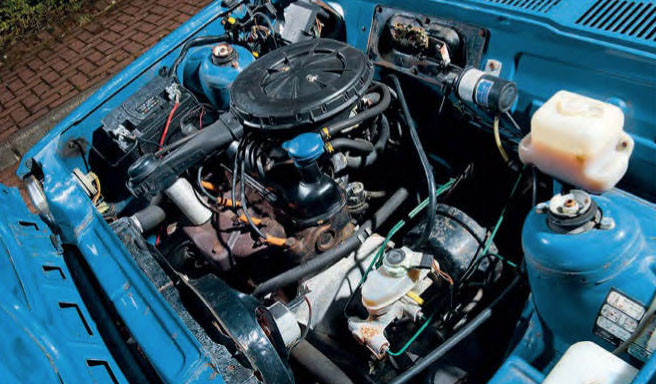
ONE TO BUY
- 950 Popular Plus
- Price: £6495
- On sale at: Facebook Marketplace
- For: Low mileage, lots of recent work
- Against: Strong money, replacement steering wheel needed
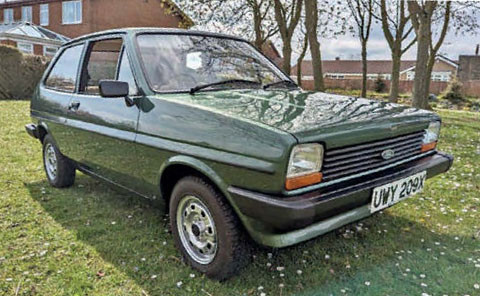
This 1981 Popular Plus is said to have covered only 34,000 miles and to drive perfectly. Subject to a bare metal respray two years, the Fiesta still wears all its original panels and is rust free. The rear beam has also been powder coated as have the wheels, which are fitted with new, period-correct Michelin MX tyres. Recent work includes retrimmed seats, plus the fitment of a new fuel tank, carb, and lines. All that’s needed is a replacement steering wheel to complete the interior. Although MoT exempt, the owner is happy to put it through a test and says it ‘will sail through’.
TECH SPEC Ford Fiesta Mk1(1.1 L)
- Body Three-door hatchback, pressed steel Monocoque
- Engine 1117cc, four cylinders, transverse, two valves per cylinder, single chain-driven camshaft, cast iron cylinder head and block, three-bearing crankshaft, Ford sonic idle carburettor.
- Max Power: 53 bhp @ 6000 rpm,
- Max Torque 59 lb. ft @ 3000 rpm
- Gearbox Four-speed manual, all-synchromesh
- Suspension Front: independent by MacPherson struts, coil springs. Rear: ‘dead’ beam axle, trailing links, Panhard rod, telescopic dampers
- Steering Rack-and-pinion Brakes Hydraulic with vacuum servo assistance. Front: 221 mm ventilated discs. Rear: 178 mm drums
- Wheels and tyres 5x12 inch steel rims, 145/70/12 tyres
- Performance Maximum speed: 86 mph
- Acceleration 0-60 mph: 15.7 seconds
- Price when launched £2179
NEED TO KNOW
Specialists
- Burton Power 0208 518 9136 burtonpower.com
- Classic Parts Shack 07511 356393 classicpartsshack.co.uk
- Ex-Pressed Steel Panels 01535 632721 steelpanels.co.uk
- Magnum Classic Ford Panels 01706 359666 magnumclassicfordpanels.co.uk
- Motomobil +49 8106 9967760 motomobil.com
Clubs & Forums
- Fiesta-Mk1 fiesta-mk1.co.uk
- Fiesta Club GB fiestaclubgb.co.uk
- Fiesta Owners’ Club fiestaownersclub.com
VALUES
- £3500-£4500 Roadworthy Mk1s
- £4500-£6000 Tidy, straight cars
- £6000-£8000+ Very good to excellent examples

